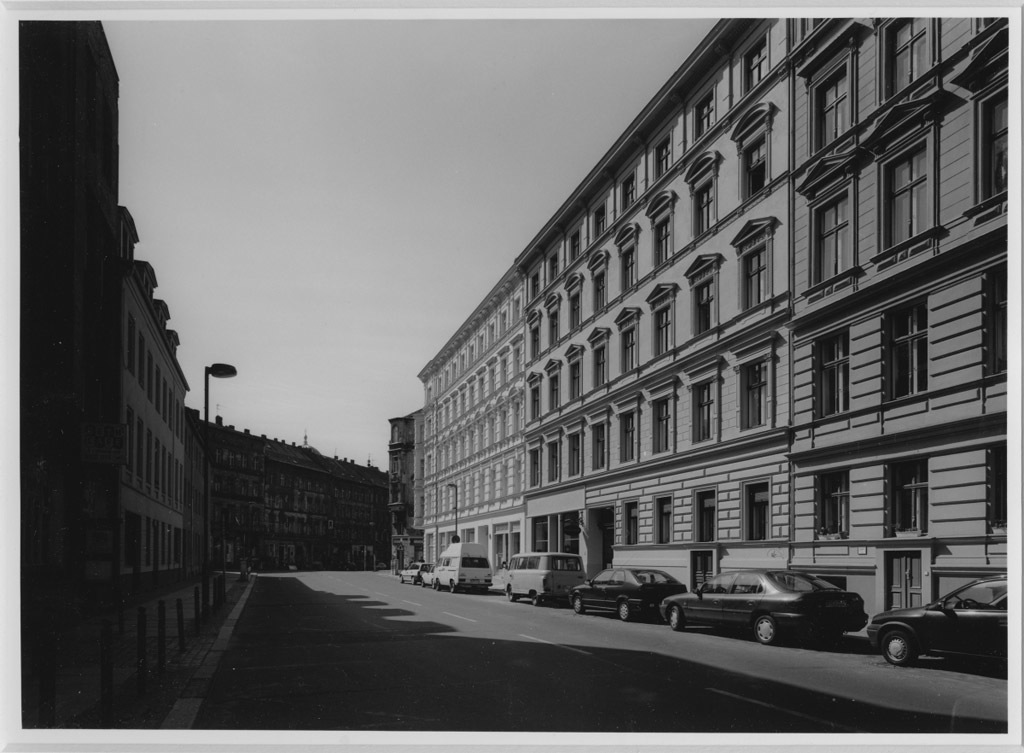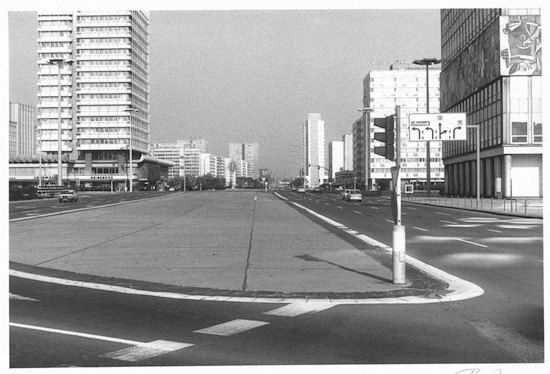
?© Ulrich Wüst (*1949). Berlin Mitte, Tucholskystraße, 1996. Silbergelatineabzug/ Gelatin silver print. 14,6 x 20,0 (17,4 x 21,9) cm - Copyright Ulrich Wüst
Collection Regard Steinstraße 12 10119 Berlin Allemagne
The exhibition Ulrich Wüst - Index/ Berlin Leporellos pursues the work of the Collection Regard on documenting and exhibiting the variety of possible photographic discourses about the change of Berlin since the end of WWII. Ulrich Wüst was born in 1949 in Magdeburg and lives in Berlin since 1972. As a qualified town planner, he has a special eye for the structure of the urban space and began to photograph as a freelance photographer in the late 70s.
Black and white photographies by Ulrich Wüst are shown documenting the urban upheavals in Berlin. Some of the pictures were taken in East Berlin before the wall came down, the rest in the 1990s. Portraits, among other things the leporello "Visitors", complete the selection. The special feature of the exhibition is the dual presentation of classic prints in picture frames as well as pictures on the leporellos made by the artist.

© Ulrich Wüst (*1949). Berlin Alexanderplatz, Oktober 1982/ October 1982 Silbergelatineabzug/ Gelatin silver print 14,5 x 21,8 (17,8 x 23,8) cm - Copyright Ulrich Wüst
The leporello of Ulrich Wüst have never been shown and they constitute, given the quality of the leporellos and the quantity of them (the artist has produced over 100 of them) a full and complete body of work. The Collection Regard shows a substantial part of the "Berlin Leporellos". Special emphasis is placed on the districts of Berlin Mitte and Prenzlauer Berg. Mostly misunderstood as a temporary or “not worthy of exhibition” media, the leporello has a strong narrative sense. Along the folded cardboard we can follow the walk and the photographic eye of the artist: chronological, formal and compositional references give a new and unique context. The juxtaposition of classic framed photo prints with the unconventional leporello addresses also the materiality of the photographic medium, which is often omitted in presentations.

